It’s high time for my brood and I to take in some more history! If you’d like, come along, brave the smoky haze choking the skies, (it’s not too bad down by the water just now,) and join our excursion to the Puget Sound Naval Museum in Bremerton, Washington.
Bremerton is located on the Kitsap Peninsula, a finger of land jutting into Puget Sound off of the larger Olympic Peninsula. The ferry which travels back and forth from Seattle makes Bremerton an easy access point for Olympic National Park’s lush rainforests, snowy peaks, and Pacific beaches.
Bremerton’s waterfront is also home to our destination. Past the ferry terminal and the obligatory Starbucks, the visitor is greeted by a face from history.
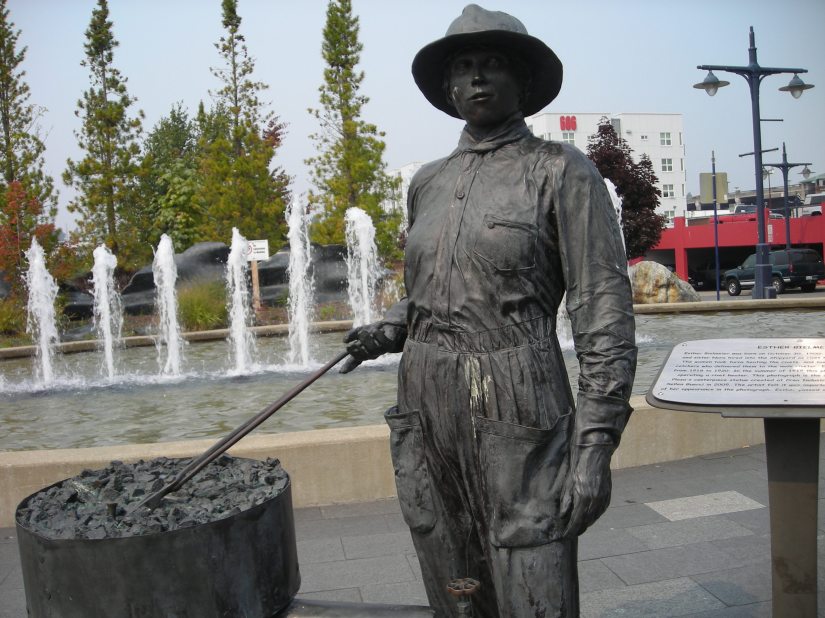
No, she’s not the iconic “Rosie the Riveter,” but perhaps she’s a near relation- Esther, the rivet heater.
Esther Bielmeir (1900-1989) was hired by the Puget Sound Naval Shipyard (PSNS) in 1918 and worked there until 1920. She and her sister, Nora, worked as rivet heaters, tossing the hot rivets to handlers.
Esther’s part in the Great War may have been a small one, not recorded in the annals of famous histories. However, her statue, standing at the entrance to the Puget Sound Naval Shipyard Memorial Plaza is a fitting reminder of all of the small hands that contributed to the great ships that have sailed from PSNS through the decades.
Following the plaza towards the museum, we viewed a variety of other memorials, interspersed with fountains, greenery and artistically placed boulders.
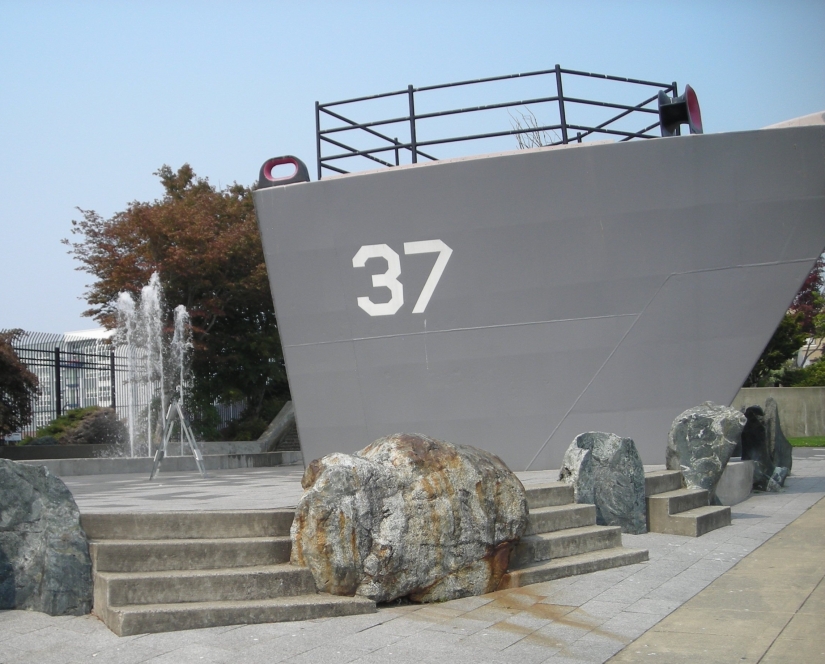

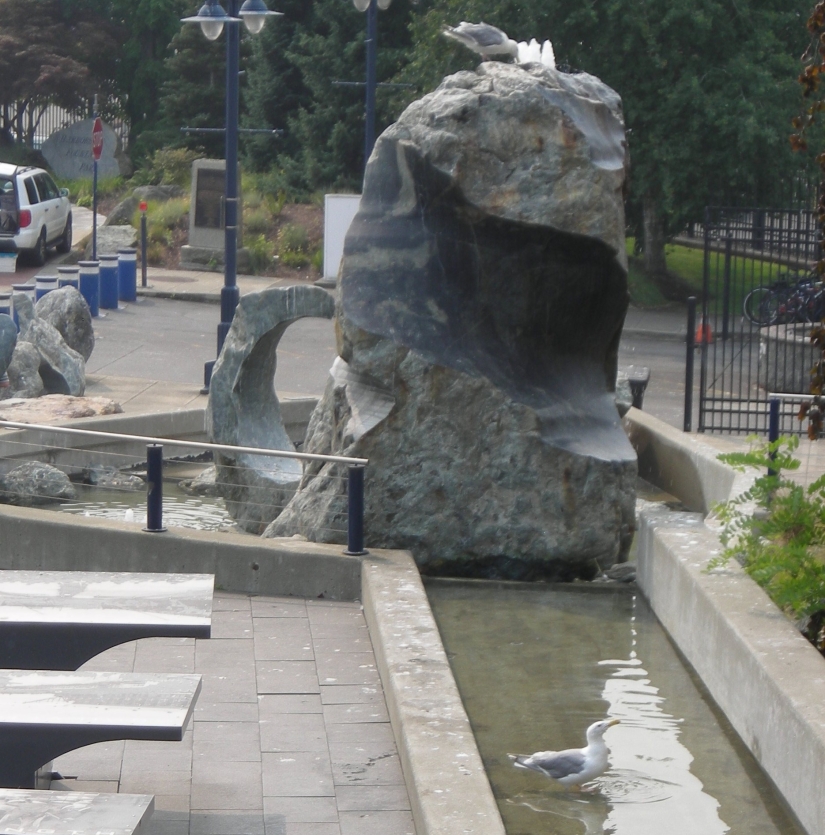
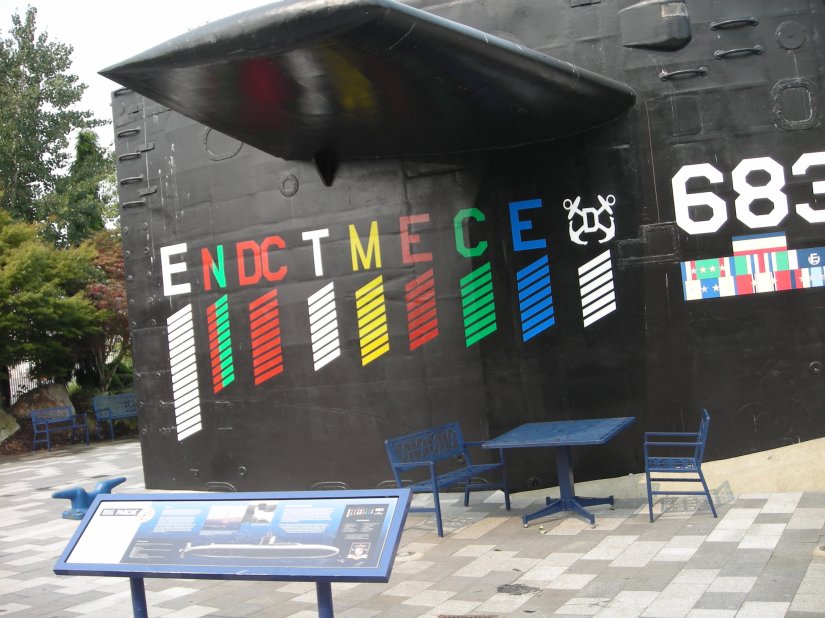
We’d made our way through the plaza and nearly made it into the museum- onto the front steps in fact- but we had to go around the side to the visitor’s entrance. And there, we were distracted…
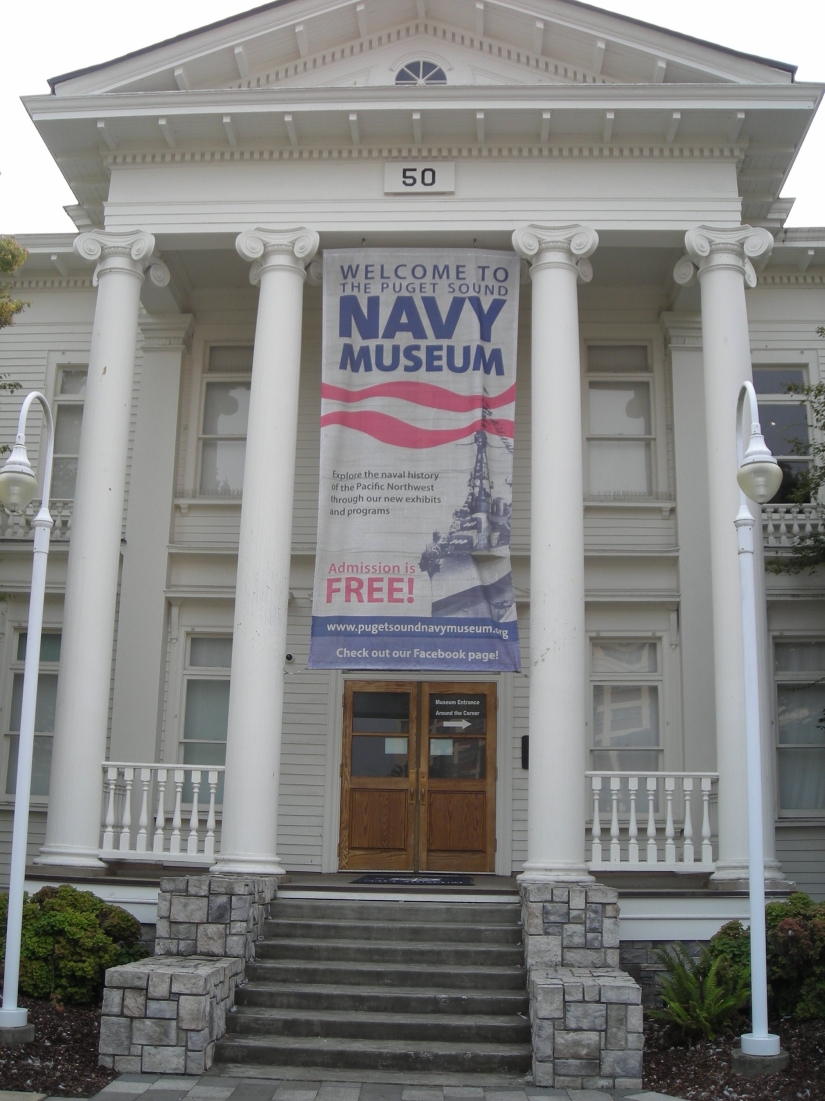
To the side of the museum is the walkway to Bremerton’s Harborside Fountain Park. It was impossible to pass by, especially once the kids heard the splashing of the row of massive fountains.
From what I’ve heard, the ambitious designer of these fountains wanted them to encapsulate the western Washington experience, and intended them to bring to mind sails of a fleet of submarines. And a pod of whales. And erupting volcanoes.
Whether the fountains bring all or any of these to mind, they are lovely, especially when they periodically “erupt” with an impressive jet of water, which I was unable to capture a picture of, thanks to three small people who were much more interested in playing hide and seek. Ah well.
We stayed to see the Seattle ferry dock, which impressed the littles, and headed back to the museum before the fountain pools became too enticing and we had to go home for a change of clothes instead.
The museum itself focuses on local naval history. The upper story drew us first, with it’s lighted display declaring the sort of exhibit we were to expect: aircraft carriers!
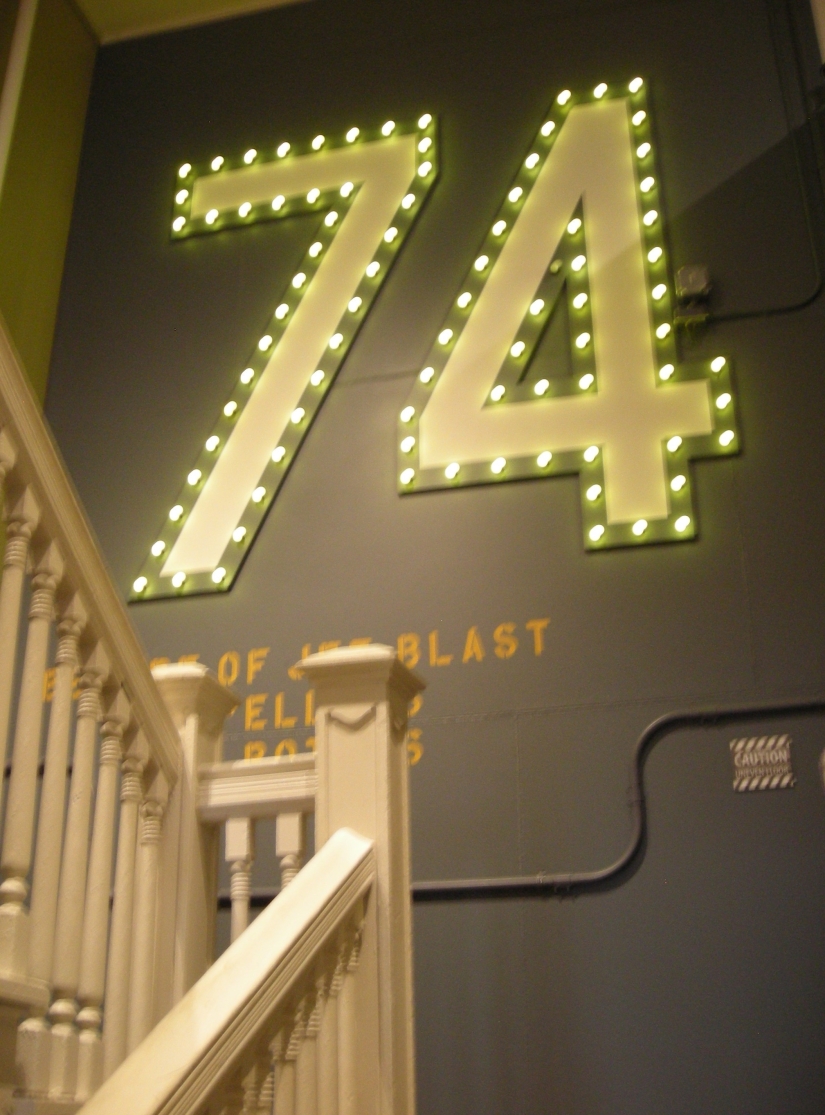
More specifically, this permanent exhibit introduces visitors to life aboard the USS John C. Stennis. We passed through numerous displays detailing day-to-day life on this enormous floating city.
The kids enjoyed an interactive display on ship to shore communication, and the little “galley.” They were also impressed by the triple-level bunk bed, and the small amount of storage available to the sailors.
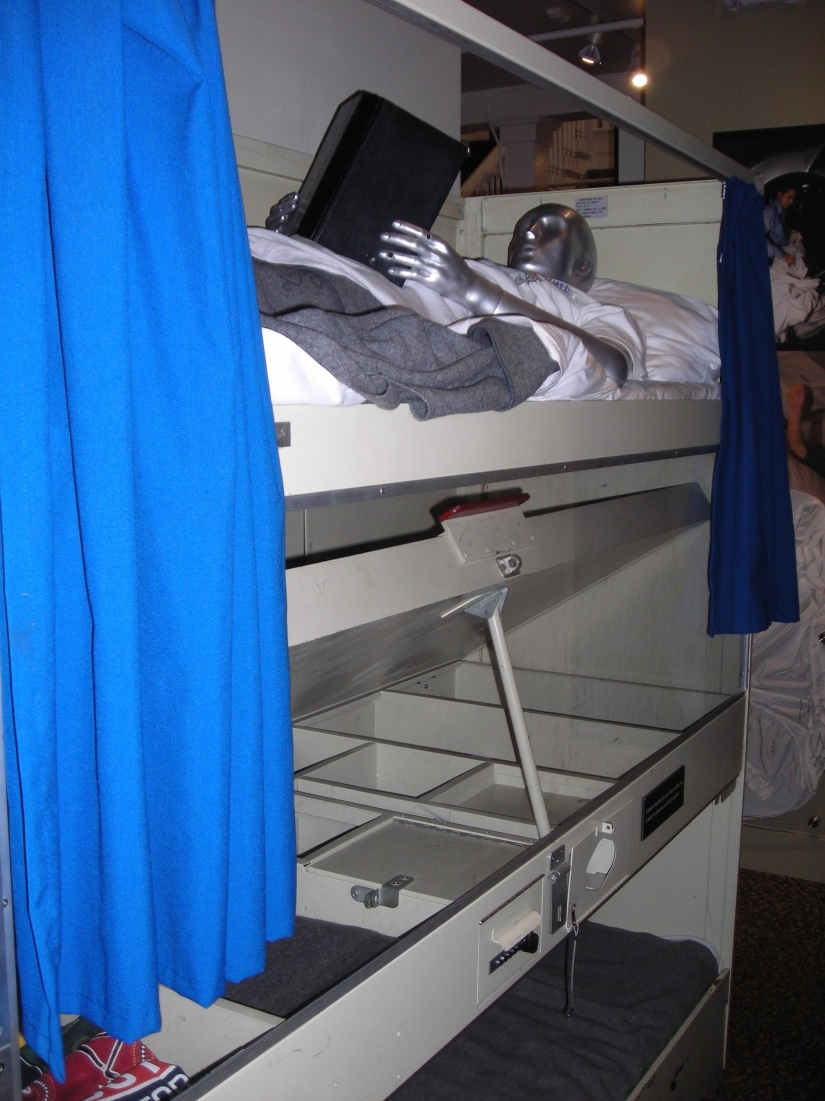
I suggested that maybe we needed a storage system like this at home to cut back on the number of toys and things on the floor. They didn’t go for it.
The room detailing work on the flight deck, where the children got to sit in pilots seats and watch a brief video on taking off from an aircraft carrier, was fascinating. (I’m glad I don’t have to trust to a steam catapult to get me out of the driveway each day!) Unfortunately, it was also not conducive to clear pictures, so you’ll just have to take my word for it.
As we left the Stennis exhibit, a display on PT boats caught my eye- particularly the section on their work in the Aleutian Islands during the Second World War.
By this point, however, the littles were ready to get downstairs. I managed to steer them through the next exhibit for a quick look. 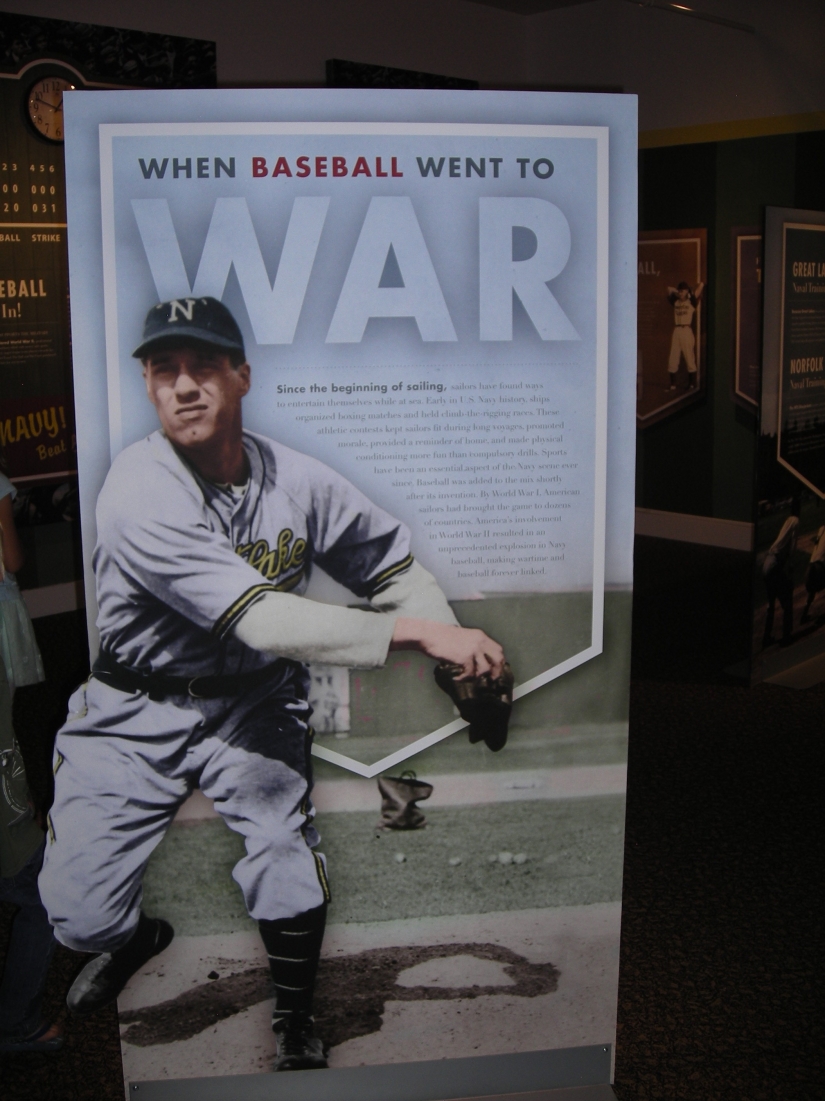
I distracted them with a trio of vintage leather baseball gloves while I checked out a few fascinating artifacts, like the trophy cup from the Great White Fleet’s visit to China in 1908, and the baseball signed by a 1945 All Star exposition team which played for the troops.
The exhibits downstairs detailed more of the shipyard’s history. The artifacts on display included one with an interesting bit of World War 2 history, a piece of one of the “Pearl Harbor Ghosts.”
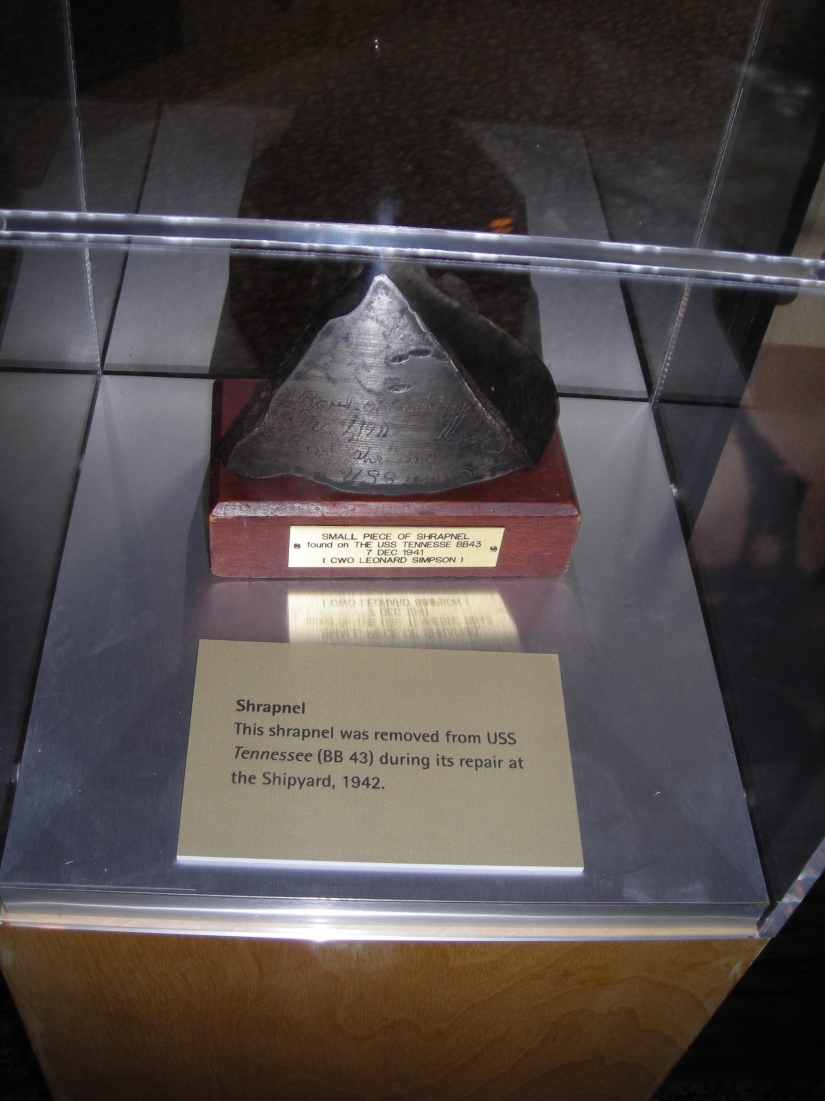 Following the 1941 attack on Pearl Harbor, Japan reported that the battleships USS Tennessee, USS Maryland, USS Nevada, USS California and USS West Virginia had been sunk.
Following the 1941 attack on Pearl Harbor, Japan reported that the battleships USS Tennessee, USS Maryland, USS Nevada, USS California and USS West Virginia had been sunk.
However, these not-so-sunken ships were whole enough to return to PSNS for modification and repair. Nicknamed the Pearl Harbor Ghosts, they were just the beginning of the PSNS’s work during the war- over 400 ships would visit these shipyards.
We could not complete a museum trip without a visit to the children’s play room.
The Naval Museum’s included a miniature galley complete with plastic food, a variety of coloring pages, books, and sea creature puppets. There was also a little playhouse area, shaped like a yellow submarine. (Is the Beatles’ song stuck in your head, too?) A rack of uniforms hung off to the side, for children to try on.
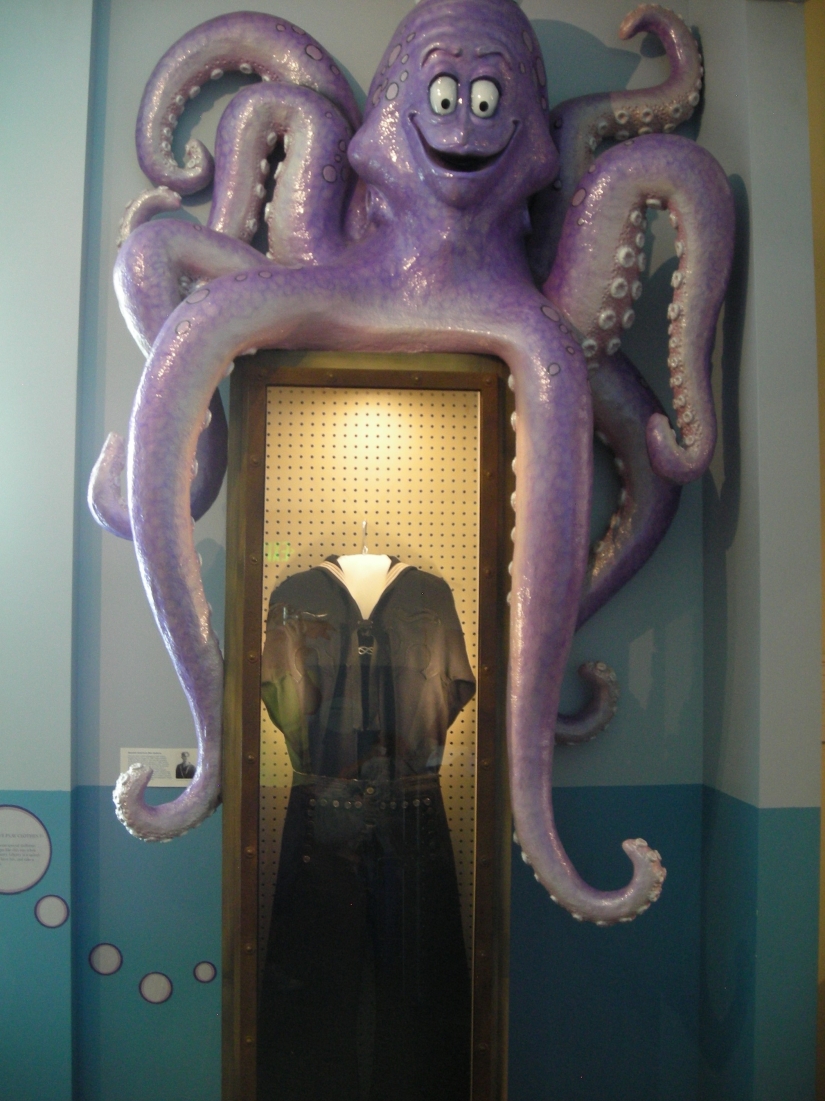 It also included one uniform behind glass, dating back to the Spanish-American war.
It also included one uniform behind glass, dating back to the Spanish-American war.
This piece of history belonged to Frank Osberry Rogers who served in the Navy from 1901-1906. He also moonlighted on his last ship, the USS Marblehead, as a tattoo artist with a particular knack for pictures of hearts and dragons.
How the octopus fits in remains a mystery.
Thanks for coming along on our excursion! Have you found any interesting pieces of history lately?
Also, for those in the smoky areas, and even more for those threatened by the forest fires, stay safe! We are praying for your relief.













After all my years of living there, and of course being a proud Navy wife, I never visited the museum. I think maybe I should go next time I’m up for a visit.
LikeLiked by 1 person
Yes! It’s a great museum. Good size for kiddos, with enough hands on stuff to keep them occupied, and interesting for the grown-ups too 🙂
LikeLike
And free. Always important 😉
LikeLike
Looks like a fun and family-friendly museum! I was actually just reading a book set in the States in 1803, a time where I usually see more focused on Europe and Napoleon. So that was nifty! (“Curse of the Blue Tattoo” by L. A. Meyer)
LikeLiked by 1 person
Oooh, very nifty! Yes, it seems like a lot of U.S. books are either Revolutionary War, or skip ahead to Civil War. I imagine SOMETHING happened in between…
LikeLiked by 1 person
“The Barbary Pirates” by C. S. Forester is a really good look at our first foreign war that no one pays attention to… not fiction, and not aimed at kids, but it’s a quick read — about 150 pages, if I remember right…
LikeLiked by 2 people
You can’t go wrong by showing the brood history. My parents took me anywhere and everywhere they could get to – and I remember it to this day.
Continue to make memories!!
LikeLiked by 1 person
Thanks GP- good for your folks! I have fond memories of checking out places like this too 🙂
LikeLiked by 1 person
WHAT IS WITH THAT OCTOPUS?! Hee hee! But this is just lovely, my friend, as always. I’m going to tuck this one away so that if we can ever reach your corner of the country we can take a trip to this museum. Frankly, I’m impressed you got this many pictures with the littles! And that title, “Pearl Harbor Ghosts”…there’s a story in that, methinks…
LikeLiked by 1 person
Yes! Let’s say “when” and we’ll take you on the whole tour 😀
LikeLiked by 1 person
WEEEE!
LikeLike